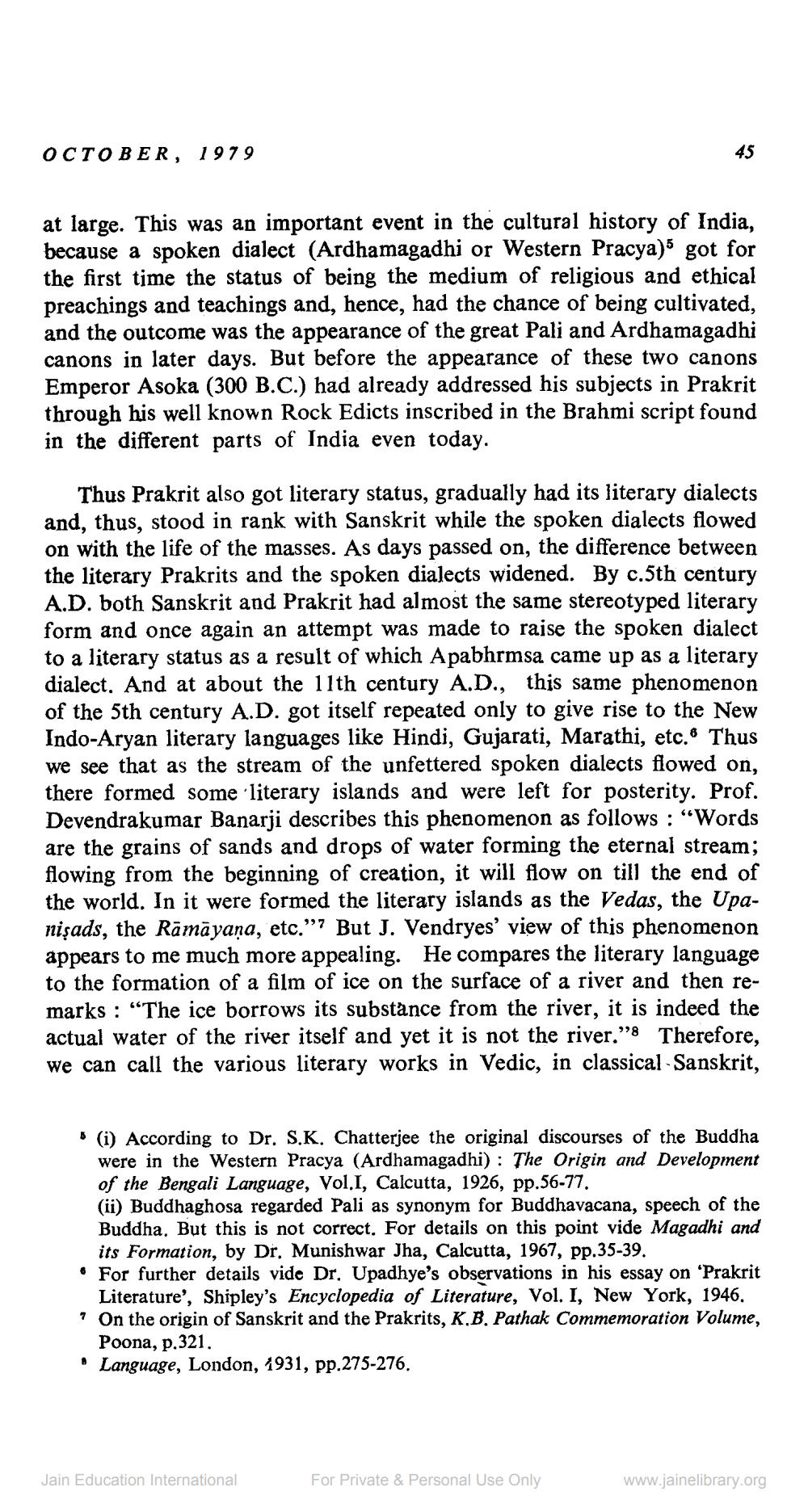Book Title: Jain Journal 1979 10 Author(s): Jain Bhawan Publication Publisher: Jain Bhawan Publication View full book textPage 8
________________ OCTOBER, 1979 45 at large. This was an important event in the cultural history of India, because a spoken dialect (Ardhamagadhi or Western Pracya)' got for the first time the status of being the medium of religious and ethical preachings and teachings and, hence, had the chance of being cultivated, and the outcome was the appearance of the great Pali and Ardhamagadhi canons in later days. But before the appearance of these two canons Emperor Asoka (300 B.C.) had already addressed his subjects in Prakrit through his well known Rock Edicts inscribed in the Brahmi script found in the different parts of India even today. Thus Prakrit also got literary status, gradually had its literary dialects and, thus, stood in rank with Sanskrit while the spoken dialects flowed on with the life of the masses. As days passed on, the difference between the literary Prakrits and the spoken dialects widened. By c.5th century A.D. both Sanskrit and Prakrit had almost the same stereotyped literary form and once again an attempt was made to raise the spoken dialect to a literary status as a result of which Apabhrmsa came up as a literary dialect. And at about the 11th century A.D., this same phenomenon of the 5th century A.D. got itself repeated only to give rise to the New Indo-Aryan literary languages like Hindi, Gujarati, Marathi, etc. Thus we see that as the stream of the unfettered spoken dialects flowed on, there formed some literary islands and were left for posterity. Prof. Devendrakumar Banarji describes this phenomenon as follows : “Words are the grains of sands and drops of water forming the eternal stream; flowing from the beginning of creation, it will flow on till the end of the world. In it were formed the literary islands as the Vedas, the Upanişads, the Rāmāyaṇa, etc.” But J. Vendryes' view of this phenomenon appears to me much more appealing. He compares the literary language to the formation of a film of ice on the surface of a river and then remarks : "The ice borrows its substance from the river, it is indeed the actual water of the river itself and yet it is not the river.”8 Therefore, we can call the various literary works in Vedic, in classical -Sanskrit, • (i) According to Dr. S.K. Chatterjee the original discourses of the Buddha were in the Western Pracya (Ardhamagadhi): The Origin and Development of the Bengali Language, Vol.l, Calcutta, 1926, pp.56-77. (ii) Buddhaghosa regarded Pali as synonym for Buddhavacana, speech of the Buddha. But this is not correct. For details on this point vide Magadhi and its Formation, by Dr. Munishwar Jha, Calcutta, 1967, pp.35-39. For further details vide Dr. Upadhye's observations in his essay on 'Prakrit Literature', Shipley's Encyclopedia of Literature, Vol. I, New York, 1946. ? On the origin of Sanskrit and the Prakrits, K.B. Pathak Commemoration Volume, Poona, p.321. • Language, London, 1931, pp.275-276. Jain Education International For Private & Personal Use Only www.jainelibrary.orgPage Navigation
1 ... 6 7 8 9 10 11 12 13 14 15 16 17 18 19 20 21 22 23 24 25 26 27 28 29 30 31 32 33 34 35 36 37 38 39 40 41
